-
Artworks


Flamenco, 2025

Lola Flores, 2024

Galatea, 2024

Colombo, 2024

Rosália, 2025

Salamanca, 2025

Preziosa, 2025

Cádiz, 2024

Pizarro, 2024

Dolores, 2024
Joana Vasconcelos Portugal, b. 1971
BESTIÁRIO, 2024-2025Rafael Bordalo Pinheiro acrylic painted faience, Azores crocheted lace
Faiança pintada al acrílico de Rafael Bordalo Pinheiro, encaje de ganchillo de las Azores13 x 39 x 34 cm | 5.12 x 15.35 x 13.39 in (Each / Cada)
UniqueFurther images
-
(View a larger image of thumbnail 1
)
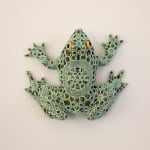
-
(View a larger image of thumbnail 2
)
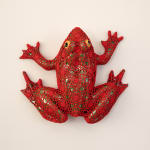
-
(View a larger image of thumbnail 3
)
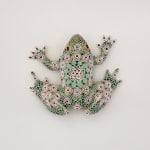
-
(View a larger image of thumbnail 4
)
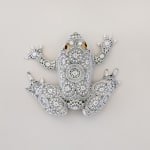
-
(View a larger image of thumbnail 5
)
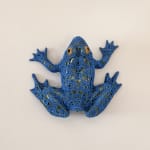
-
(View a larger image of thumbnail 6
)
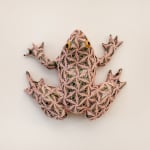
-
(View a larger image of thumbnail 7
)
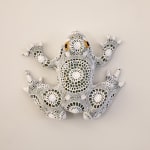
-
(View a larger image of thumbnail 8
)
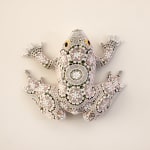
-
(View a larger image of thumbnail 9
)
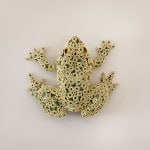
-
(View a larger image of thumbnail 10
)

-
(View a larger image of thumbnail 11
)
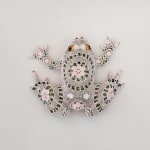
Cada pieza está cubierta con crochet realizado por artesanas de la isla de Pico, en las Azores, destacando técnicas tradicionales y honrando el legado cultural de estas mujeres. El uso del crochet en estas obras crea una "segunda piel" que protege y atrapa a los animales al mismo tiempo, generando una tensión entre el confort y el poder. Este enfoque invita a reflexionar sobre las dicotomías entre lo doméstico y lo salvaje, lo femenino y lo masculino, lo público y lo privado. Además, al incorporar elementos tradicionalmente asociados al trabajo de las mujeres, Vasconcelos cuestiona y subvierte los estereotipos de género y las jerarquías culturales. Each piece is covered with crochet made by craftswomen from Pico Island, in the Azores, highlighting traditional techniques and honoring the cultural legacy of these women. The use of crochet in these works creates a "second skin" that simultaneously protects and traps the animals, generating a tension between comfort and power. This approach invites reflection on the dichotomies between the domestic and the wild, the feminine and the masculine, the public and the private. Furthermore, by incorporating elements traditionally associated with women's work, Vasconcelos questions and subverts gender stereotypes and cultural hierarchies.Una de sus series más icónicas es el "Bestiario", donde los animales de cerámica se recubren con crochet hecho a mano. En esta serie, Vasconcelos selecciona animales con los que los humanos mantienen relaciones de control o temor, como caballos, toros, lobos, gatos, serpientes y cangrejos. Las esculturas se basan en cerámicas naturalistas, pintadas a mano e inspiradas en las obras del artista portugués Rafael Bordalo Pinheiro. Cada pieza está cubierta con crochet realizado por artesanas de la isla de Pico, en las Azores, destacando técnicas tradicionales y honrando el legado cultural de estas mujeres. El uso del crochet en estas obras crea una "segunda piel" que protege y atrapa a los animales al mismo tiempo, generando una tensión entre el confort y el poder. Este enfoque invita a reflexionar sobre las dicotomías entre lo doméstico y lo salvaje, lo femenino y lo masculino, lo público y lo privado. Además, al incorporar elementos tradicionalmente asociados al trabajo de las mujeres, Vasconcelos cuestiona y subvierte los estereotipos de género y las jerarquías culturales.
One of her most iconic series is the "Bestiary," where ceramic animals are covered with hand-made crochet. In this series, Vasconcelos selects animals with which humans have relationships of control or fear, such as horses, bulls, wolves, cats, snakes, and crabs. The sculptures are based on naturalistic ceramics, hand-painted, and inspired by the works of the Portuguese artist Rafael Bordalo Pinheiro. Each piece is covered with crochet made by craftswomen from Pico Island, in the Azores, highlighting traditional techniques and honoring the cultural legacy of these women. The use of crochet in these works creates a "second skin" that simultaneously protects and traps the animals, generating a tension between comfort and power. This approach invites reflection on the dichotomies between the domestic and the wild, the feminine and the masculine, the public and the private. Furthermore, by incorporating elements traditionally associated with women's work, Vasconcelos questions and subverts gender stereotypes and cultural hierarchies.1of 11 -
(View a larger image of thumbnail 1
)










